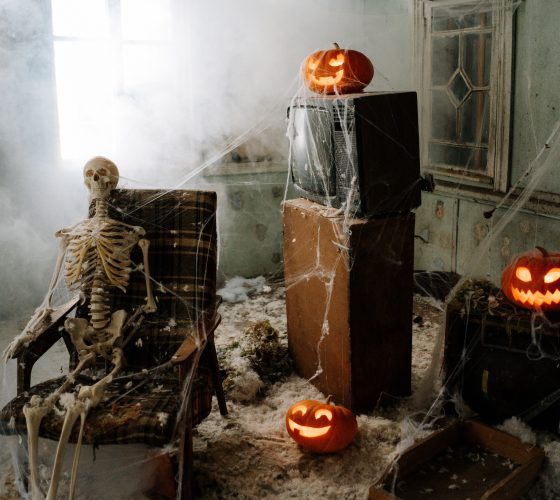Home Articles Web design & development 5 web design mistakes that can scare away your visitors
5 web design mistakes that can scare away your visitors
Last updated December 2022
It’s the season for ghosts, ghouls and devilish deeds, and we have seen some real monsters – grotesque and ghastly websites that would frighten anyone away. So, we have delved into our bag of tricks to show you how to vanquish these Halloween horrors of website design for ever.
1. Painfully slow website speed
You have worked your magic and got that visitor to your website. But if your site takes more than three agonising seconds to load, you could lose a terrifying 40% of your visitors!
Luckily, there are a few tricks to improve your website speed and give your visitors the best possible experience in no time.
- Optimise large media files (images and videos) and remove any that don’t add value.
- Check your hosting bandwidth – heavy traffic might be a reason your website is slow. Check with your hosting provider if your bandwidth can handle the traffic you are getting.
Find more tips and tricks on how to speed up your website or get in touch – our managed hosting packages are designed to optimise websites and maintain web speed.

2. Breathe life into your website
Choosing the wrong colour palette can suck the life-blood from your site. Breathe a new lease of life into your website with colour and images.
- Use complementary colours with the necessary contrast to make your site stand out, easy to read and appropriate to your brand.
- Avoid ghostly apparitions, they can scare away your visitors. Use good strong images and it is worth investing in professional original photography if you can afford it. An alternative is to spend time researching stock images, you can achieve a good result for less.
3. Un-responsive website
Don’t let your website behave like a poltergeist, play havoc with your content and mess it all up. This is what happens if your site isn’t built to be responsive.
With nearly 60% of website traffic coming from mobile users, having a website designed to be mobile-friendly is essential to provide users with a good experience.
A responsive website looks good and provides an optimised experience for the user, regardless of what device they are using to view your website. The pages will automatically adjust to fit screens of all sizes.
It has such an impact on the user experience of a website that Google uses how mobile-friendly a website is as a factor in ranking sites.
Find out more about how to make your website mobile-friendly.

4. Purge your content
Visitors don’t want to wade through ancient content and click on dead links lurking on the website. It can be a painful experience and can lose you sales.
- Dust off the cobwebs by regularly reviewing content and removing anything that is no longer relevant.
- Check links and fix or remove any broken or outdated ones.
- Take notice of the images you use – are they still relevant, up to date and illustrate your point?
5. The monster mash
Your website is no place for the monster mash. Use too many fonts and you will surely create a monstrous sight.
- Stick to one, two or three fonts at the most.
- Make sure they are readable from any device and use bold and italic to create contrast with style for a good looking and professional site.
- Select a web-safe font which do not rely on users having fonts pre-installed on their computer.